 W
WAlbatros was a submarine chaser of the Regia Marina built in 1930s which served during World War II. Later she was reclassified as a torpedo boat, most likely purely for administrative purposes.
 W
WArmando Diaz was a light cruiser of the Condottieri class and the sister-ship of the Luigi Cadorna. She served in the Regia Marina during World War II. She was built by OTO, La Spezia, and named after Armando Diaz, an Italian Field Marshal of World War I.
 W
WAshigara (足柄) was the final vessel of the four-member Myōkō class of heavy cruisers of the Imperial Japanese Navy, which were active in World War II. The other ships of the class were Nachi, Myōkō, and Haguro. Ashigara was named after Mount Ashigara on the border of Kanagawa and Shizuoka Prefectures.
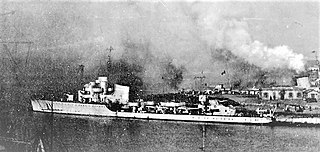 W
WAviere ("Airman") was one of seventeen Soldati-class destroyers, built for the Regia Marina in the late 1930s and early 1940s.
 W
WSMS Kurfürst Friedrich Wilhelm was one of the first ocean-going battleships of the German Kaiserliche Marine. The ship was named for Prince-elector (Kurfürst) Friedrich Wilhelm, 17th-century Duke of Prussia and Margrave of Brandenburg. She was the fourth pre-dreadnought of the Brandenburg class, along with her sister ships Brandenburg, Weissenburg, and Wörth. She was laid down in 1890 in the Imperial Dockyard in Wilhelmshaven, launched in 1891, and completed in 1893. The Brandenburg-class battleships carried six large-caliber guns in three twin turrets, as opposed to four guns in two turrets, as was the standard in other navies.
 W
WSS Batavier II was a steam packet for the Batavier Line that sailed between Rotterdam and London for most of her career. The ship was built in 1897 by the Gourlay Brothers of Dundee. The Dutch ship could carry a limited amount of freight and up to 321 passengers. She was rebuilt in 1909 which increased her length by over 5 metres (16 ft).
 W
WBrummer was a training ship of Nazi Germany's Kriegsmarine during World War II designed in the mid 1930s primarily for AA gunnery training, she was also fitted for mine laying, her intended duty in wartime. Brummer was also used to test high pressure steam turbine systems designed for the German destroyers.
 W
WSS Conte Rosso was an Italian transatlantic ocean liner that was built in Scotland in 1921–22, became a troop ship in the 1930s and was sunk by a Royal Navy submarine in 1941.
 W
WDiana was a fast aviso or sloop of the Italian Regia Marina which served during the Second World War. Originally designed as a yacht and despatch vessel for the Italian Head of Government, she was converted for military use.
 W
WARA General Belgrano (C-4) was an Argentine Navy light cruiser in service from 1951 until 1982. Originally commissioned by the U.S. as USS Phoenix, she saw action in the Pacific theatre of World War II before being sold by the United States to Argentina. The vessel was the second to have been named after the Argentine founding father Manuel Belgrano (1770–1820). The first vessel was a 7,069-ton armoured cruiser completed in 1896.
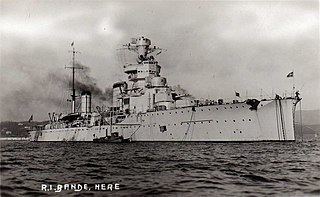 W
WGiovanni delle Bande Nere was an Italian light cruiser of the Giussano class, which served in the Regia Marina during World War II. She was named after the eponymous 16th-century condottiero and member of the Medici family. Her keel was laid down in 1928 at Cantieri Navali di Castellammare di Stabia, Castellammare di Stabia; she was launched on 27 April 1930, and her construction was completed in 1931. Unlike her three sisters, the finish and workmanship on the vessel were not rated highly. She was sunk on 1 April 1942 by the British submarine HMS Urge.
 W
WSMS Hela was an aviso built for the German Kaiserliche Marine in the mid-1890s, the last vessel of that type to be built by the German Empire. As the culmination of the type in German service, she represented significant improvements over earlier vessels, particularly the Wacht and Meteor classes, which had been disappointments in service. She was intended to serve as a fleet scout and as a flotilla leader for torpedo boats. Hela marked a step toward the development of the light cruiser. Armed with a battery of four 8.8 cm (3.5 in) guns and three 45 cm (17.7 in) torpedo tubes, the ship proved to be too weakly-armed for front-line combat.
 W
WJun'yō Maru (順陽丸) was a Japanese cargo ship that was attacked and sunk in 1944 by the submarine HMS Tradewind, resulting in the loss of over 5,000 lives.
 W
WK XVIII was one of five K XIV class submarines built for the Royal Netherlands Navy. She served during World War II.
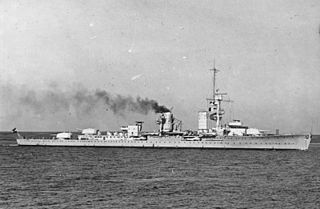 W
WKarlsruhe was a light cruiser, the second member of the Königsberg class, and served from November 1929 to May 1938, and again from November 1939 to April 1940, seeing action in World War II. She was operated by two German navies, the Reichsmarine and the Kriegsmarine. She had two sister ships, Königsberg and Köln. Karlsruhe was laid down in July 1926 at the Deutsche Werke shipyard in Kiel, launched in August 1927, and commissioned into the Reichsmarine in November 1929. She was armed with a main battery of nine 15 cm SK C/25 guns in three triple turrets and had a top speed of 32 knots.
 W
WKuma (球磨) was the lead vessel of the five Kuma-class light cruisers in the Imperial Japanese Navy. She was named after the Kuma River in Kumamoto prefecture, Japan.
 W
WSMS Kurfürst Friedrich Wilhelm was one of the first ocean-going battleships of the German Kaiserliche Marine. The ship was named for Prince-elector (Kurfürst) Friedrich Wilhelm, 17th-century Duke of Prussia and Margrave of Brandenburg. She was the fourth pre-dreadnought of the Brandenburg class, along with her sister ships Brandenburg, Weissenburg, and Wörth. She was laid down in 1890 in the Imperial Dockyard in Wilhelmshaven, launched in 1891, and completed in 1893. The Brandenburg-class battleships carried six large-caliber guns in three twin turrets, as opposed to four guns in two turrets, as was the standard in other navies.
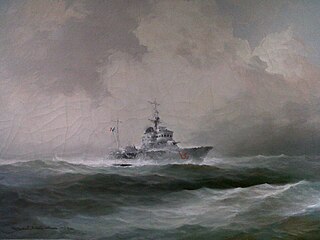 W
WThe Italian torpedo boat Lince was a Spica-class torpedo boat built for the Regia Marina in the late 1930s. During the Second World War, Lince was involved in several naval actions before she was sunk in August 1943 by a British submarine.
 W
WSS Makambo was a steamship first owned by Burns Philp & Co. Ltd. She was built in Port Glasgow in Scotland and named after an island in the Solomon Islands. She carried both passengers and cargo and was principally used on routes between eastern Australia and islands in Melanesia and the Tasman Sea. In November 1908 Jack and Charmian London travelled from Guadalcanal to Sydney on the Makambo after abandoning their ill-fated circumnavigation of the world on the Snark, a 45' sailing yawl.
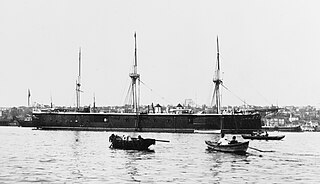 W
WMesudiye was a central-battery ironclad of the Ottoman Navy, one of the largest ships of that type ever built. She was built at the Thames Iron Works in Britain between 1871 and 1875. Mesudiye had one sister ship, though she was purchased by the Royal Navy and commissioned as HMS Superb. Her primary armament consisted of twelve 10-inch (250 mm) guns in a central armored battery.
 W
WThe Japanese destroyer Nadakaze was one of 15 Minekaze-class destroyers built for the Imperial Japanese Navy (IJN) in the late 1920s. The ship was converted into a patrol boat in 1940 and then into a destroyer transport the next year. After the start of the Pacific War, she participated in the Philippines Campaign in late 1941, the Dutch East Indies campaign in early 1942 and played a minor role in the Battle of Midway in mid-1942. She was sunk by a British submarine in mid-1945.
 W
WHMS Oxley was an Odin-class submarine of the Royal Australian Navy (RAN) and Royal Navy (RN).
 W
WPeleng-i Derya was an Ottoman gunboat that was torpedoed by HMS E11 in shallow water off Istanbul, Ottoman Empire on 23 May 1915.
 W
WSMS Prinz Adalbert was an armored cruiser built in the early 1900s for the German Kaiserliche Marine, named after Prince Adalbert of Prussia, former Commander-in-Chief of the Prussian Navy. She was the lead ship of her class, which included a second ship, Friedrich Carl. Prinz Adalbert was built at the Imperial Dockyard in Kiel. Her keel was laid in April 1900, and she was launched in June 1901. Her completion in January 1904 had been delayed by a surplus of construction projects at the Imperial Dockyard. She was armed with a main battery of four 21 cm (8.3 in) guns, a significant improvement over the previous armored cruiser, Prinz Heinrich, which carried only two 24 cm (9.4 in) guns. The ship was capable of a top speed of 20 kn.
 W
WSS Richard With was a steamship in the Hurtigruten passenger ship fleet in Norway. It was built in 1909. It was sunk by the British submarine HMS Tigris in 1941, which caused the death of 99 people.
 W
WRigault de Genouilly was a -class aviso of the French Navy. The ship was designed to operate from French colonies in Asia and Africa. On 4 July 1940 Rigault de Genouilly was torpedoed and sunk by the submarine HMS Pandora off the Algerian coast. The day before she had been damaged during the British attack on Mers-el-Kébir.
 W
WThe French submarine Souffleur was a Requin-class submarine built for the French Navy in the mid-1920s. Laid down in October 1922, it was launched two years later and commissioned in August 1926. Souffleur was torpedoed and sunk on 25 June 1941 off Beyrut, Lebanon in position 33°49′N 35°26′E by the British submarine HMS Parthian.
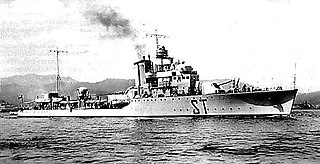 W
WStrale was one of four Freccia-class destroyers built for the Regia Marina in the early 1930s. Completed in 1932, she played a minor role in the Spanish Civil War of 1936–1939 supporting the Spanish Nationalists and served in World War II.
 W
WThe Tirranna was a Norwegian merchant ship captured by the German raider Atlantis during the Second World War. She took on the passengers and crew of the Kemmendine which had been captured and sunk by the Atlantis in July 1940 and sailed for France as a prize ship with a cargo of looted goods. On 22 September 1940 she was torpedoed off the coast of France by the British submarine Tuna and sank with 87 lives lost. The survivors were taken to a German naval facility in Royan.
 W
WTrento was the first of two Trento-class cruisers; they were the first heavy cruisers built for the Italian Regia Marina. The ship was laid down in February 1925, launched in October 1927, and was commissioned in April 1929. Trento was very lightly armored, with only a 70 mm (2.8 in) thick armored belt, though she possessed a high speed and heavy armament of eight 203 mm (8.0 in) guns. Though nominally built under the restrictions of the Washington Naval Treaty, the two cruisers significantly exceeded the displacement limits imposed by the treaty.
 W
WSMS Undine was the last member of the ten-ship Gazelle class of light cruisers that were built for the German Kaiserliche Marine in the late 1890s and early 1900s. The Gazelle class was the culmination of earlier unprotected cruiser and aviso designs, combining the best aspects of both types in what became the progenitor of all future light cruisers of the Imperial fleet. Built to be able to serve with the main German fleet and as a colonial cruiser, she was armed with a battery of ten 10.5 cm (4.1 in) guns and had a top speed of 21.5 knots. Undine was a modified version of the basic Gazelle design, with improved armor and additional coal storage for a longer cruising range.
 W
WThe No.7 minesweeper , also sometimes called W-7 was a No.7 class minesweeper for the Imperial Japanese Navy. It was laid down on 27 October 1937, and finished on 16 June 1938.
 W
W